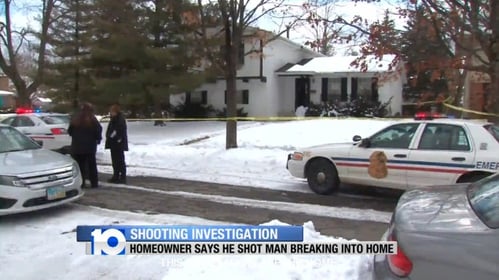*Until comfortable and confident, all drills should be done with an unloaded firearm*
This is a question that pops up a lot with cross-dominant eye shooters. Those are people who have a dominant eye on the opposite side of their dominant hand. It makes for interesting times trying to find a shooting style that accommodates that. For rifles, it’s pretty easy to switch hands but for pistols, it gets tricky.
For the rest who don’t have that problem, it’s still a good idea to practice with your non-dominant hand. If you’ve ever broken or sprained your dominant hand before, you instantly realize how hilarious it is trying to teach yourself to write, play sports or do just about anything with the hand you don’t normally use for those activities.
The same can be said for pistols. If your dominant hand is ever out of commission, you’ll want to have that other hand ready.
Here are some issues you face when practicing with your non-dominant hand:
Not all pistols are ambidextrous.
If you chose a pistol with a magazine slide, safety, and other features facing only one side, you’ll have to adjust to use that pistol in the opposite hand. This doesn’t really affect revolvers as much. For pistols, you may have to find new ways of hitting the slide release or ejecting a magazine.
Quick Drills
- Practice unloading and loading while holding the pistol in your non-dominant hand. If it feels awkward, that’s fine. If you run into a real obstacle (other than frustration), you may want to consider switching to an ambidextrous pistol or revolver.
- At the range, see how much you can do using just your non-dominant hand. For things like loading a magazine or racking the slide, use your other hand to assist.
If you’re not a cross-dominant eye shooter, you are now.
For things like sighting in, you may need to cant your head or the pistol so that you can gain proper sight alignment and picture. While in an emergency self-defense scenario, you may not need to or care to get perfect sight alignment, it’s still a great thing to practice for overall readiness.
Quick Drills
- Find your method for gaining sight alignment with your dominant eye and your non-dominant hand.
When in doubt, always try to adjust the firearm to your sight – not the other way around.
Firing one-handed can be hard. Firing one-handed with the other hand will be harder.
If you don’t have a lot of practice firing one-handed, a lot of it depends on how comfortable you are with your firearm. If it’s a smaller sub-compact or J-frame style revolver, most will find it easy. For larger full-size pistols and revolvers, it can be downright nerve-racking. So, if you don’t feel comfortable firing one-handed on the dominant side, you’re probably not going to feel better about doing it with the other hand. However, practicing one-handed shooting is a good thing overall. You may likely never need it or use it, but it’s a skillset you have retained in muscle memory.
Quick Drills
- If you practice one-handed shooting, try to switch it up evenly to give your other hand a try.
Drawing from across the body can be time consuming
If you don’t have a holster configured for your opposite side (and most don’t), you may be stuck drawing cross-body. Your speed will likely suffer slightly but you may still be able to do it reliably.
Quick Drills
- Try drawing and re-holstering with your non-dominant hand while your firearm is holstered in your typical everyday style.
- Be careful re-holstering a loaded firearm. We recommend trying this quite a few times with an unloaded pistol until you get the hang of it.
It’s completely possible you’ll never need to draw from your non-dominant hand, however having the ability to do so – and being confident in that ability – may be a saving grace should you ever find yourself injured or unable to use your dominant hand.













![[VIDEO] Concealed Carrier Stops Attack On Elderly Man In Kroger Parking Lot](https://imagedelivery.net/sbm_lYeJbALkepJgtmRD5w/concealednation.org/2015/04/ScreenHunter_503-Apr.-24-17.25.jpg/w=560,h=280)
